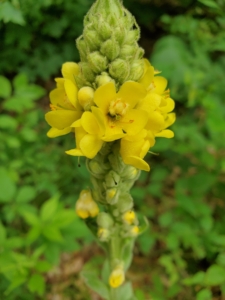Individual gardens, grown in backyards, balconies, and containers; community gardens developed in public spaces; and Indigenous demonstration gardens developed collaboratively, all play a role in helping local small-scale climate adaptation. Gardeners can show how to practice agency in managing climate change, while Indigenous demonstration gardens can offer public education about, and promote traditional uses of, Indigenous plants.
Gardeners face many challenges of climate change effects such as fluctuating temperatures, erratic weather extremes, water shortages, droughts, and flooding from rainstorms. These challenges are on top of common hindrances of gardeners, including, weeds, insects and animal pests, and necessary watering restrictions imposed by governments. When gardeners recognize that they have agency as “both stewards and guardians of our environment,” then there are actions that they can take locally to adapt their gardening practices to climate change. These practices are noted by the National Wildlife Federation, and include:
- Using human-powered yard tools vs gasoline-powered tools to reduce energy consumption and minimize pollution.
- Growing diverse native species of plants to manage the impact of so-called “invasive species.”
- Learning about the connection among birds, bees, and other pollinators in order to appreciate how plants grow, and how gardens depend on symbiotic relationships with diverse insects.
- Reducing water consumption and protecting topsoil by using rain barrels and by practicing mulching.
- Composting both yard waste and kitchen waste. While this can be done with the support of municipal services, it is also important to consider how compost can be a source of soil nutrients and as work as a natural fertilizer for diverse community gardens.
Indigenous demonstration gardens, even in high-traffic urban areas, can highlight how to manage plants in the midst of climate change, while also promote traditional uses of Indigenous plants. For example, the Bickford Teaching Garden is a biodiverse garden with five plots: pollinator plants, Indigenous sacred medicinal plants, herbs, sun-friendly plants, and a plot for seed saving. The garden, one of several Indigenous gardens in downtown Tkaronto (Toronto, Ontario), was designed and installed by Miinikaan and is maintained by volunteers. The garden beds were developed using the sheet mulching method which regenerates soil without cutting into the ground.
Another Indigenous demonstration garden is the Na’tsa’maht Indigenous Plant Garden – a “living classroom” located on the traditional territories of the Lkwungen and Wsáneć peoples, on the lands of the Landsdowne Campus at Camosun College in Victoria, BC. In addition to supplying space for Indigenous-led education, it also offers opportunities for the study and practice of sustainability at the college. Na’tsa’maht is a Salish word that means “unity or working together as one” or “being of one mind, one spirit.”
All these examples of gardens offer local, human-scale examples of climate adaptation. Whether gardening in a community garden, backyard, or apartment balcony, or volunteering in an Indigenous demonstration garden, gardening can offer opportunities to take individual and collective action in the context of climate change.
By Leela Viswanathan
(Image Credit: Steffi Pereira, Unsplash)


